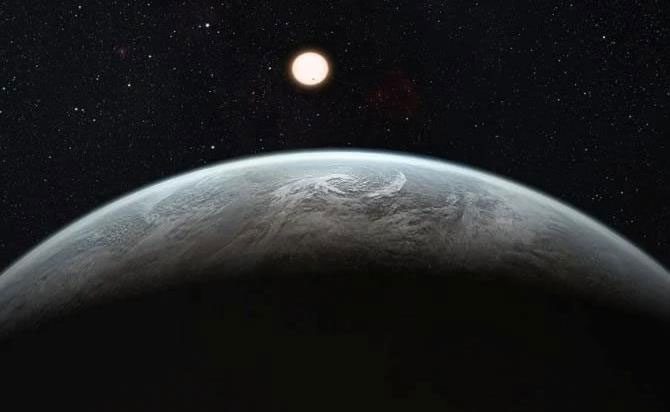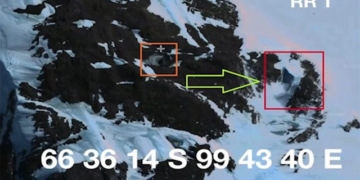A team of scientists from ETH Zurich (Swiss Federal Institute of Technology) has confirmed that there must be rocky, habitable planets in two nearby solar systems and has designed a basic profile for one of them: Earth α-Cen.
According to planetary scientist Haiyang Wang, the lead author of the study, Earth-like planets are very difficult to detect with modern technology, and even if they are found, searching for signs of life is quite challenging.
However, based on the characteristics of some star systems close to us, such as Proxima Centauri (4.2 light-years away) and Alpha Centauri AB (4.37 light-years away), it is almost certain that there are a few Earth analogs wandering in the dark zones.

Hypothetical landscape on Earth α-Cen – (Graphic image from ESO).
Therefore, the authors decided to create a “hypothetical Earth” with specific characteristics, which future studies could use to search for matching signs.
They named their planet Earth α-Cen, assumed to orbit the Alpha Centauri AB binary star system.
According to Science Alert, based on the composition of this star system, Earth α-Cen would contain all the rocky-forming elements like magnesium, silicon, iron, along with many volatiles necessary to form a habitable world such as carbon and oxygen.
Earth α-Cen would need to have a composition and structure similar to Earth, with a silicate-rich mineral layer, diamonds, and graphite capable of storing water.
The iron core of the planet may be slightly larger than that of Earth and less geologically active, potentially lacking tectonic activity, making it more similar to Venus than Earth. This could affect its habitability, but it does not mean that life cannot exist in another form, as NASA also suspects that Venus may harbor life.
The early atmosphere of Earth α-Cen would resemble that of Earth during the Archean Eon, when the first ancient microorganisms appeared. This atmosphere would be rich in methane, carbon dioxide, and water.
Since Alpha Centauri AB is 1.5 to 2 billion years older than the Sun, it is possible that Earth α-Cen is older than Earth and has had enough time for a more advanced form of life to develop, despite the challenges of tectonic activity.
According to the research team, we have until 2035 to search for Earth α-Cen, as Alpha Centauri A and B, also known as Rigil Kentaurus and Toliman, will drift further apart in their orbit until that time, causing light to diminish. At that point, telescopes will not be blinded, increasing the chances of finding small rocky planets like Earth.




















































